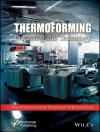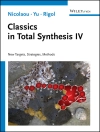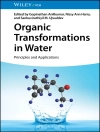The major emphasis here is on enantioselective reactions using asymmetric catalysts. Examples from the total synthesis of various natural and unnatural targets validates the utility of the synthetic methods. Specific topics discussed: cycloaddition, cycloisomerization and sigmatropic rearrangement reactions, allylic and carbonyl functionalization reactions, metal-catalyzed cross-coupling reactions, desymmetrization, fluorination, polymerization and sulfide oxidation reactions.
This volume is part of a 3-volume set: Science of Synthesis Stereoselective Synthesis Workbench Edition
Further information about Stereoselective Synthesis (including sample pages and the table of contents)
Cuprins
<p>3.1 [m+n]-Cycloaddition Reactions (Excluding [4+2])<br>3.2 [4+2]-Cycloaddition Reactions<br>3.3 [m+n+1]-Carbocyclization Reactions<br>3.4 [m+n+2]-Carbocyclization Reactions<br>3.5 Asymmetric Cycloisomerizations<br>3.6 Ene Reactions<br>3.7 Sigmatropic Rearrangements<br>3.8 Electrocyclic Reactions<br>3.9 Allylic Substitution Reactions<br>3.10 Isomerizations To Form a Stereogenic Center and Allylic Rearrangements<br>3.11 Allylic and Benzylic Oxidation<br>3.12 Mizoroki–Heck Reaction<br>3.13 C—C Bond Formation by C—H Bond Activation<br>3.14 Cross Coupling<br>3.15 Protonation, Alkylation, Arylation, and Vinylation of Enolates<br>3.16 α-Functionalization of Carbonyl Compounds<br>3.17 Baeyer–Villiger Reactions<br>3.18 Ring Opening of Epoxides, Aziridines, and Cyclic Anhydrides<br>3.19 Acylation of Alcohols and Amines<br>3.20 Asymmetric Fluorination, Monofluoromethylation, Difluoromethylation, and Trifluoromethylation Reactions<br>3.21 Stereoselective Polymerization<br>3.22 Oxidation of Sulfides</p>











